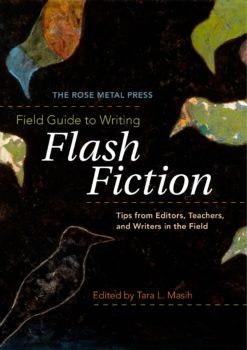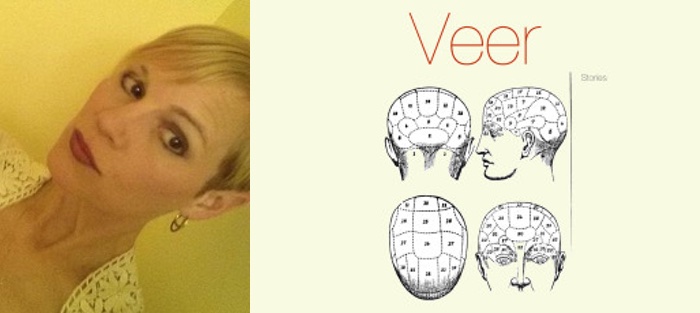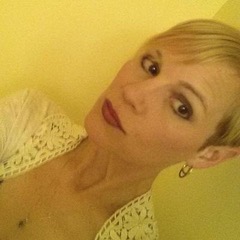If you hang out in the world of flash fiction and its cousin prose poetry, chances are excellent that you’re going to run into the name Kim Chinquee. Her writing career, like that of Lydia Davis and Diane Williams, has been largely defined by flash fiction, and she is a stalwart of that writing community, both as an author of several books and an editor (she supports the form actively as an senior editor at New World Writing, based at the University of Southern Mississippi’s Center for Writers). This month her latest book of flash fiction, Veer, was published by Seattle-area publisher Ravenna Press.
Chinquee received her M.A. in creative writing from the University of Southern Mississippi and her M.F.A. from the University of Illinois, Urbana-Champaign. A recipient of a Pushcart Prize, her flash fiction has been published in Denver Quarterly, Conjunctions, Noon, Willow Springs, and Story Quarterly—which were the first homes for many of the pieces in Veer. The new book is Chinquee’s second full-length collection of innovative fictions with Ravenna Press, preceded by Oh Baby (2006). Another collection, Pretty (2010) was part of the Marie Alexander Poetry Series from White Pine Press, which is dedicated to the flash fiction/prose poetry nexus. She also contributed an essay to The Rose Metal Field Guide to Writing Flash Fiction, a seminal handbook on the modern incarnation of the form.
Chinquee’s work often deals with physical and emotional violence, often capturing the moments just after deep injuries occur—before the person who experiences them even seems to notice what has happened. I must admit to being quite spooked out at times, and feeling scared for her characters. Feeling “Oh no, this character doesn’t know how she’s going to be scarred by what she’s just gone through.” (Most of Chinquee’s narrators are female.)
About halfway through Veer, I was getting ready for bed when I thought I hear someone downstairs in my kitchen. I thought it was the dog, but no—the dog was in my youngest son’s bed. As I headed downstairs I swore I felt a presence around the corner, and I approached it with my breath held in trepidation. This was someone in trouble. This was someone who had been hurt, someone I had to be gentle with because her grip on herself was fragile and not very charitable. Someone whose damage by emotional violence felt like it could spill out, so I had to be careful.
But there was no one in my kitchen. I had just imagined one of Kim Chinquee’s characters from Veer, entering my house as she had entered my imagination.
Interview:
Steven Wingate: Your published work is primarily flash fiction, with some on the borderline between that and prose poetry. There’s a small but strong tradition of this kind of writing, with authors like Lydia Davis, Diane Williams (whose journal Noon, which focuses on that kind of work, you’ve been a regular in), Kim Addonizio, etc. It also goes back to Charles Baudelaire, whose Paris Spleen over a century and a half ago was the first book to call itself “poems in prose.” If you’re a branch on a tree of that tradition, what writers make up its trunk and its roots? What are some of the branches around you that also grow from them?
 Kim Chinquee: Flash seems, to me, to include more elements of plot, in non-traditional forms: through tone, setting, character, voice. As far as prose poetry, I like to refer to Michael Benedikt’s definition from The Prose Poem: And International Anthology, published in 1976, where he answers the question: “What are the special properties of the prose poem as they appear today?” He lists them as (1) the unconscious, (2) the use of everyday speech, (3) a visionary thrust, (4) a certain humor, (5) a hopeful skepticism. I talk about this more extensively in my essay “Flash Fiction, Prose Poetry, and Men Jumping Out of Windows” published in The Rose Metal Field Guide to Writing Flash Fiction.
Kim Chinquee: Flash seems, to me, to include more elements of plot, in non-traditional forms: through tone, setting, character, voice. As far as prose poetry, I like to refer to Michael Benedikt’s definition from The Prose Poem: And International Anthology, published in 1976, where he answers the question: “What are the special properties of the prose poem as they appear today?” He lists them as (1) the unconscious, (2) the use of everyday speech, (3) a visionary thrust, (4) a certain humor, (5) a hopeful skepticism. I talk about this more extensively in my essay “Flash Fiction, Prose Poetry, and Men Jumping Out of Windows” published in The Rose Metal Field Guide to Writing Flash Fiction.
In my own writing, I tend to use elements of both prose poetry and flash fiction, but seem to gravitate more towards flash fiction. The first flash fiction piece I wrote, “The Top Shelf,” (which is included in Veer) was written for a workshop with Mary Robison at the University of Southern Mississippi’s Center for Writers. I was reading a lot of Amy Hempel at the time and studying with Frederick Barthelme. I sent the story to Noon, Diane Williams accepted it, and she has also become another of my mentors. I’m a huge fan of Lydia Davis. And other masters of the form. Since 2002, I’ve been hosting a flash fiction online writing group called Hot Pants on Francis Ford Coppola’s website Zoetrope, and find my fellow writers there very supportive and a source of inspiration.
Many writers who work along this cusp are very dedicated to it, eschewing forms like the novel and the traditional 3,000-word and up story to focus on the short-short form. Why do you think that is in general, and what continues to draw you to this form?
I appreciate the brevity of the form. The focus on rhythm, the sensory details. The language. The way one word can change the whole gist of the piece. I suppose it’s a lot like poetry. Yet I like the narrative aspect of it. It’s like each word is a part of a collage.
Even within the flash fiction/prose poetry world, there’s a difference between working on the longer pieces and the shorter ones. (For me, the shorter the piece is, the more attention I pay to its musicality.) What kinds of creative differences do you feel in working with a longer flash piece like “Eggs” and one that veers (pardon the pun) toward prose poetry, like “Yellow Telephone” or “I Was Supposed to End”?
“Eggs” is another of my earlier pieces of flash fiction. I suppose maybe I had the idea/story in my head before I wrote it. Pieces like “Yellow Telephone” and “I Was Supposed to End” started with prompt words from my Hot Pants room: trying to connect those words and form them into a story. On another note, after writing “Eggs” hardly any revisions were made. Upon revising “Yellow Telephone” and “I Was Supposed to End,” they were cut quite drastically.
 You’re a dedicated distance runner—I see your marathon photos popping up on Facebook—and I imagine that this shapes your sense of discipline, which in turn shapes your writing. Most writer/runners I’ve met are novelists, which makes sense because the novel is certainly a marathon. What’s the writer/runner connection for someone whose work is primarily in “sprint” forms?
You’re a dedicated distance runner—I see your marathon photos popping up on Facebook—and I imagine that this shapes your sense of discipline, which in turn shapes your writing. Most writer/runners I’ve met are novelists, which makes sense because the novel is certainly a marathon. What’s the writer/runner connection for someone whose work is primarily in “sprint” forms?
Good question! I was a fairly decent sprinter in junior high until I started running cross-country. I think I was more disciplined at writing longer work before I started writing flash fiction. I guess the brain/body adjusts to different forms?
I suppose if flash fiction were a running form, it would be a sprint. One that requires a lot of thinking and training and art to have a good, solid race. Marathon training, like novel-writing, is much more of an investment: one can train for months, like one can spend months/years writing a novel, and then nothing comes of it (other than learning from the experience, of course). The redeeming thing about writing, though, is one can always revise. A runner can never re-run a race, rewind, revise—one can learn, but the body’s always changing.
As far as my own running, on long runs, I like to settle into them, as if with each step I become closer to “home” until I can’t run anymore. It’s also a way for me to channel my thoughts and story ideas. A great source of meditation.
Sometimes, on a good run, I’ll simply pay attention to certain sensory details. I usually run to the nearby Delaware Park, and notice the changes from one day to the next: the reflection on the lake, the color of the sky, the angles of the trees. The way the face of the Abraham Lincoln’s statue never changes. I say hi to the buffalo outside the zoo. It’s a kind of ritual for me. Something that kind of grounds me in my writing.
In much of Veer the stories can take place anywhere—there’s a kind of geographic androgyny to them. Yet some, like “I Was a Junior Member,” feel extremely Midwestern to me. You’ve got a Midwestern connection, don’t you? How does that region shape your work, and what are your feelings about location in general as it relates to stories unfolding?
I grew up on a dairy farm in Wisconsin, and most of my childhood was spent outdoors, playing and/or working in the fields. Interacting with the animals. I feel a deep connection to the land, and cherish many memories: like baling hay, feeding calves, attempting to tame wild cats. Visiting the creek and finding minnows. Tending to the garden. Mowing the lawn. Milking cows. Some of these things were a solace for me.
In some ways, especially with flash fiction, the setting, to me, can be a character in itself. Last summer, on my last visit to Wisconsin, I took a bike ride past the farm where I grew up. It seemed so much smaller than I remembered.
Every writer makes his/her own deal with autobiography. The characters in the book endure a lot of emotional violence, and some physical violence as well. Many are female, and many are wounded to the point of numbness. What kinds of deals with autobiography have you made in order to render these characters?
I write a lot from autobiography. And of course, I fictionalize. When I write based on autobiography, fictionalizing gives me a certain liberation from the actual experience, a way of facing the violence, yet also having control of it and changing the story, per se, and making it my own.
The last time we saw each other you were on a sabbatical and writing a novel. How did that process go for you, and what were the writerly ups and downs of dealing with the novel vs. your flash work? What’s your relationship with the novel form?
I’ve completed three novels. However, the novel I wrote on sabbatical was the first I wrote in linear fashion—it was helpful to sit down with prompt words each day and connect them.
I think my attention span is just more keen to flash fiction. Sort of like one trains the body to be a sprinter. The sabbatical allowed me time to really know my characters, to inhabit them, to have compassion for them and to find a way for them to connect in the midst of tragedy.
You’re a military veteran (and mother of a current soldier) at a time when the military experience—and people’s responses to it—are big and polarizing elements of American culture. This shows up in quite a few of the shorts, like “Cells” and “Formation,” yet what you write stays away from the macho concerns and combat-centeredness that we see in a lot of literature coming out of the military. Could you talk about that strain in your writing a bit? Do you feel, for instance, any desire to show the non-combatant’s side of the military experience?
Not really. I guess I’m just mostly writing from my experience. I didn’t join the military out of a desire to serve my country. I just wanted help paying for college. I didn’t know much about the military until it became the center of my life. At 21, I ended up as a single mom, living with my son overseas. And, in time, certain things I saw made me more aware, and I decided it wasn’t right for me. I learned probably more than I expected. Saw more than I wanted to see. My son is currently serving in army infantry. I’m proud of him. I try not to worry.
My favorite piece in Veer is “What to Do on Vacation,” which struck me as different from the others. It’s longer, for one, and feels less like a snapshot—even though one could say its a series of snapshots—and involves character development in the way others pieces don’t. Was there something different for you about this piece, too?
Thank you. As I write flash fictions, many of them tend to connect. A lot of them remain unpublished. Similar to one of my unpublished novels, I wrote “What to Do on Vacation” as a series of snapshots using prompt words. I was doing a lot of yoga at the time, and also juicing a lot, and on the verge of a break-up. Also, I wanted to bring in as many sensory details as possible: the woman obsessed with listening and wanting to see hyenas and lemurs. It was fun to research and imagine a character in that role. And to put the story in alternate points of view.







